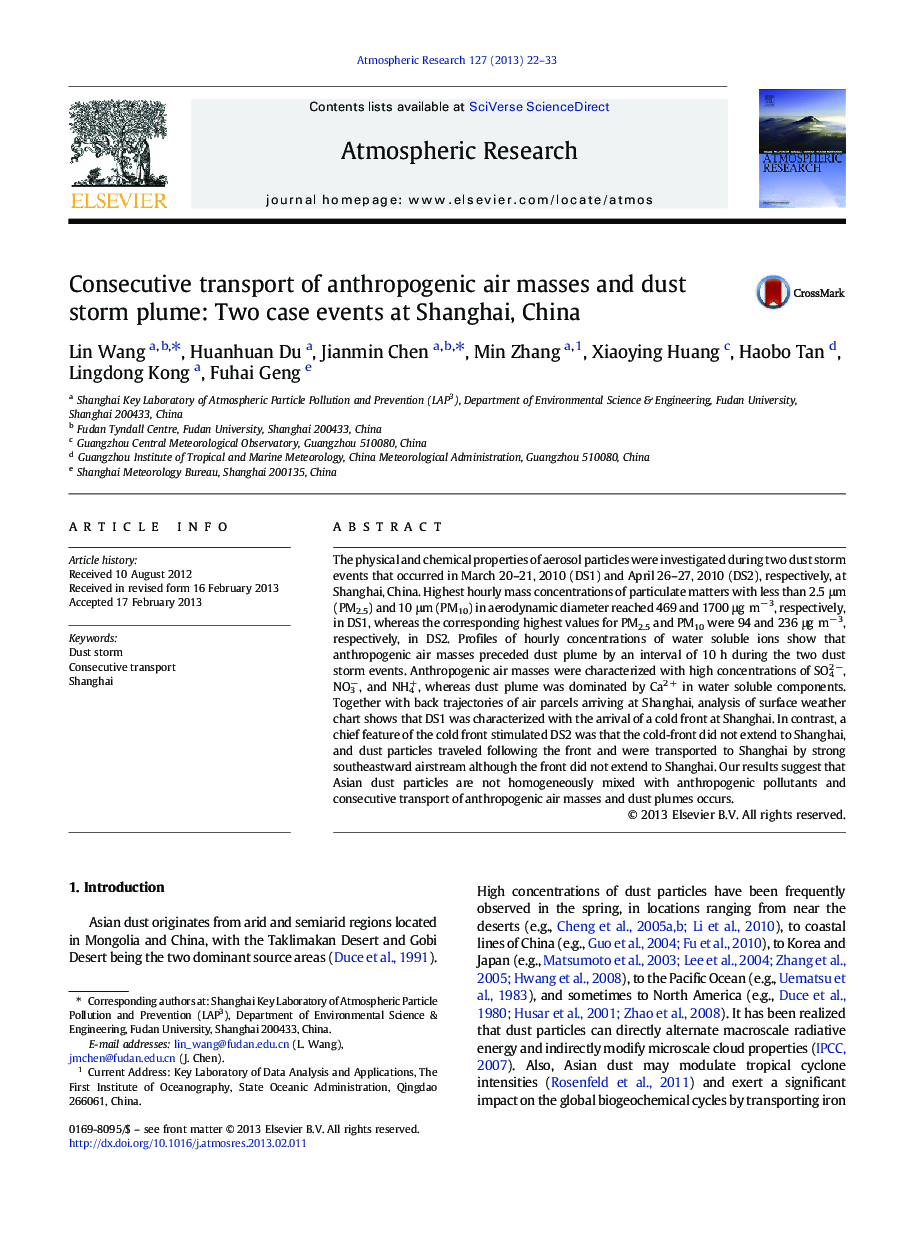| Article ID | Journal | Published Year | Pages | File Type |
|---|---|---|---|---|
| 4450039 | Atmospheric Research | 2013 | 12 Pages |
•Asian dust particles were not homogeneously mixed with anthropogenic pollutants.•Consecutive transport of anthropogenic and dust plumes occurred by an interval of 10 hours.•Dust particles can be transported to Shanghai by strong airstreams between a high and a low.
The physical and chemical properties of aerosol particles were investigated during two dust storm events that occurred in March 20–21, 2010 (DS1) and April 26–27, 2010 (DS2), respectively, at Shanghai, China. Highest hourly mass concentrations of particulate matters with less than 2.5 μm (PM2.5) and 10 μm (PM10) in aerodynamic diameter reached 469 and 1700 μg m− 3, respectively, in DS1, whereas the corresponding highest values for PM2.5 and PM10 were 94 and 236 μg m− 3, respectively, in DS2. Profiles of hourly concentrations of water soluble ions show that anthropogenic air masses preceded dust plume by an interval of 10 h during the two dust storm events. Anthropogenic air masses were characterized with high concentrations of SO42 −, NO3−, and NH4+, whereas dust plume was dominated by Ca2 + in water soluble components. Together with back trajectories of air parcels arriving at Shanghai, analysis of surface weather chart shows that DS1 was characterized with the arrival of a cold front at Shanghai. In contrast, a chief feature of the cold front stimulated DS2 was that the cold-front did not extend to Shanghai, and dust particles traveled following the front and were transported to Shanghai by strong southeastward airstream although the front did not extend to Shanghai. Our results suggest that Asian dust particles are not homogeneously mixed with anthropogenic pollutants and consecutive transport of anthropogenic air masses and dust plumes occurs.
